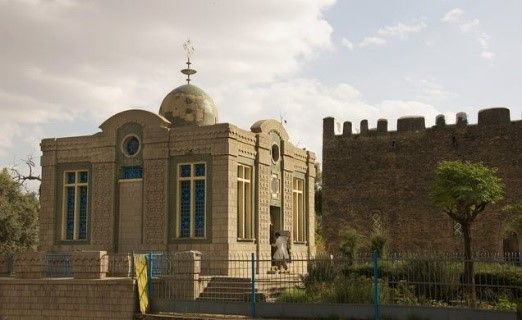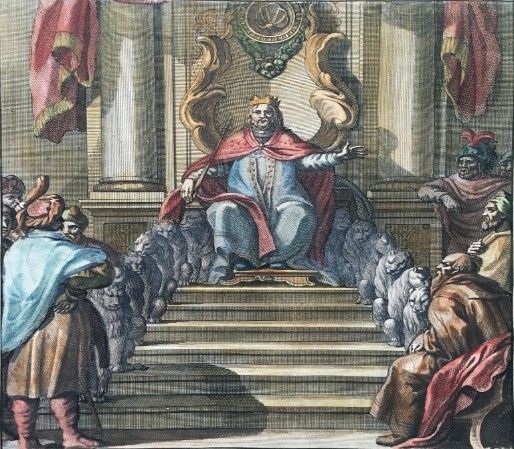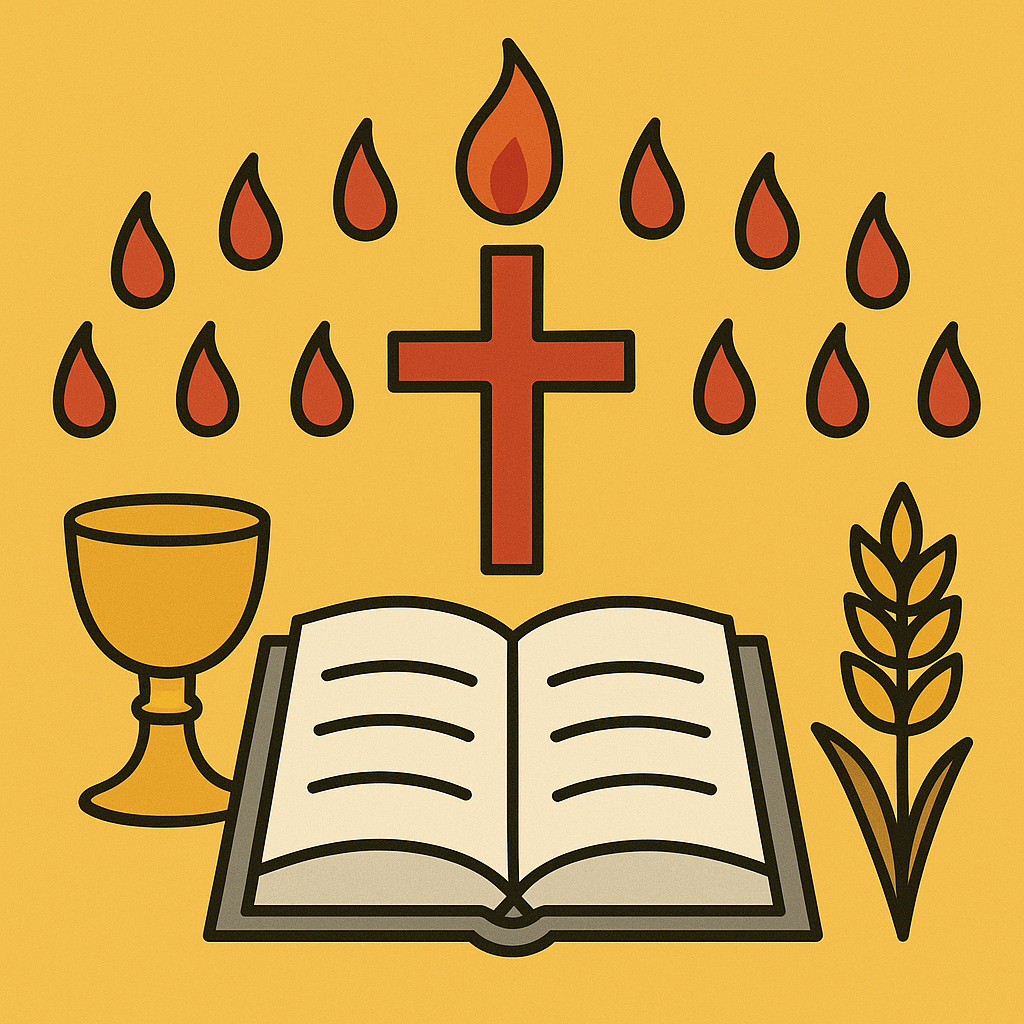I Kings 10 - 11
The Queen of Sheba comes for a visit
The Queen of Sheba is an unnamed queen from the land of Sheba who travels to
Jerusalem to meet King Solomon (2 Chron. 9). According to Josephus, she was
the queen of Egypt and Ethiopia. But if you feel more comfortable relying on more
recent archaeological and historical sources, then the Kingdom of Saba (Sheba) is
modern-day Yemen in southern Arabia.
What we do know is that she was from a wealthy kingdom. Perhaps Saba was like
present day microstate of Monaco on the French Riviera. Monaco is less than one
square mile in size with about 40,000 residents. According to the CIA World
Factbook, Monaco has the world's lowest poverty rate and the highest number of
millionaires and billionaires per capita in the world.
If Sabo was Monaco-like in size and wealth, this would explain why there isn’t any
archeological evidence of its existence and how she could take such wealth to
Jerusalem.
I Kings 10:1, “When the queen of Sheba (no, we really don’t know her name)
heard about the fame of Solomon and his relation to the name of the Lord, she
came to test him with hard questions.”
She also brought Solomon (verse 2) “spices, LARGE quantities of gold, and
precious stones-she came to Solomon and talked with him.”
Impressed by Solomon’s wisdom, and by the riches of his kingdom, she
proclaimed, “Your wisdom and prosperity far surpass the report that I had heard”
(verse 7). The queen’s visit was a success, she was “overwhelmed” by what she
saw and heard. Verse 9, “Praise be to the Lord your God, who has delighted in
you and placed you on the throne of Israel.”
The queen gives King Solomon 120 talents of gold, precious stones and the largest
quantity of spices ever brought to Jerusalem (verse 10). In return King Solomon
gives her gifts and “every desire that she expressed” (verse 13). After receiving
these gifts, the queen returns to the land of Sheba with her retinue.
The Biblical account of the Queen of Sheba and King Solomon ends there, but that
doesn’t stop people from puffing up the story with pious traditions and myths.
The Ethiopian Orthodox Church identifies the Queen of Sheba as Queen Makeda
and identifies the land of Sheba as ancient Ethiopia. One story has it that the Queen
traveled to Jerusalem and had a love affair with King Solomon. Makeda then
returned to the land of Sheba and gave birth to a son, Menelik. It seems that
tradition has it that when Solomon gave her “everything she desired” (verse 13)
she got more than she bargained for. Menelik was raised in Ethiopia, but when he
turned 22, he traveled to Jerusalem to meet his father. King Solomon is delighted
with his firstborn son and tries in vain to convince Menelik to remain in Israel and
succeed him as king. However, Menelik chose to return to the land of Sheba.
Solomon sent him back to Ethiopia, taking the Ark of the Covenant with him. To
this day, many Ethiopians believe that the Ark of the Covenant resides within the
Chapel of the Tablet next to the Church of Maryam Tsion in Aksum, Ethiopia.
The claim that the ark is in Ethiopia must be accepted on faith since no one can
visit it. Only one living person has seen it, he is the “Guardian of the Covenant,” a
monk who can never leave the grounds. He serves as a security guard (and
perhaps caretaker).

Chapel of the Tablet
Solomon, being a young man, then appears to have gone on a spending binge, taxing and spending in a way that would make a modern-day politician envious. Verses 14-29 he collected wealth from merchants and traders, made hundreds of gold shields, a great throne inlaid with ivory and fine gold on a platform six steps high with lions on the ends of each step. Here is what it might have looked like:

His goblets were made of gold (none of that cheap silver for Solomon).
He built a fleet of merchant ships and year after year, “everyone who came brought gift-articles of silver and gold, robes, weapons and spices, and horses and mules” (verse 25). In verse 26 is says, “Solomon accumulated chariots and horses; he had fourteen hundred chariots and twelve thousand horses.”
There is one item I would suggest that he have over his throne. In large letters, the passage from Deut. 17:16-17, “The king, moreover, must not acquire great numbers of horses for himself or make the people return to Egypt to get more of them, for the Lord has told you. ‘You are not to go back that way again.’ He must not take many wives, or his heart will be led astray. He must not accumulate large amounts of silver and gold.” As we will see, the wise King Solomon found it difficult to follow the wisdom he possessed. Just like Solomon, we know better than we do.
I Kings 11:1-4, “King Solomon, however, loved many foreign women.” These women turned his heart “after their gods. . . his wives led him astray” (verse 3) “As he grew old, his wives turned his heart from after other gods, and his heart was not FULLY devoted to the Lord his God, as the heart of David his father had been.”
In verse 11 we find Solomon building “a high place for Chemosh the detestable god of Moab and for Molech the detestable god of the Ammonites. He did the same for all his foreign wives, who burned incense and offered sacrifices to their gods.” This act by Solomon was probably motivated by politics as well as a desire to please his wives.
The result of his apostasy is seen in verse 11, “I will most certainly tear the kingdom away from you and give it to one of your subordinates.” But God would not do this until after Solomon dies and he would keep one tribe, Judah will be retained, “for the sake of David my servant” (verse 13). Solomon was standing on the shoulders of David. The momentum and goodwill that David earned has been squandered by Solomon.
Do you remember the Edomites? They were the descendants of Esau, brother of Jacob. They had that conflict over the birthright, with Esau selling his birthright for a bowl of stew. Well, the Edomites were longtime enemies of Jacob’s descendants, Israel, and they started to give Solomon some trouble. Later in Israel’s history we find King Herod, who was an Edomite, also.
In I Kings 11:14 we find a couple of Edomites being used by God to punish Israel. “Then the Lord raised up against Solomon an adversary, Hadad the Edomite, from the royal line of Edom.” Saul fought the Edomites and David subdued them. In one battle Hadad was taken to Egypt by some of his father’s officials. The Pharaoh was pleased with his “house guest” and even gave Hadad the sister of his wife as his bride. Whether he was happy with this gift or whether he was hoping for a flashy red chariot convertible, is not known. But, when you are a guest and the Pharaoh gives you a gift, you smile, say thank you and pretend you are thrilled with it. But you probably can’t regift a bride as you would a painting you don’t like.
When Hadad heard that David and Joab had both died, he asked for permission to return to his homeland. It doesn’t say whether he took his wife. But what we see here is God working behind the scenes to use this man as a tool to punish his people, Israel.
Verse 23, we see another man being raised up against Solomon, Rezon, who also gathered a group of men around him and his people settled near Damascus. You can see that God is moving the chess pieces on the board, without either of these men knowing that they are being used by God to do his will. This reminds me of the Book of Esther.
Not only were there enemies coming together from outside of Israel, but there were also enemies rising up from within. Verse 26, Also, Jeroboam, son of Nebat rebelled against the king. Jeroboam was one of Solomon’s officials.” In fact, he was in charge of the labor force, so he must have known a lot of people. It always hurts when trusted insiders turn on a leader.
While leaving Jerusalem Jeroboam met with a prophet by the name of Ahijah. Ahijah had a way of making his message in a memorable and dramatic manner. Verse 30, he grabbed hold of his new cloak and tore it into twelve pieces and handed ten pieces of it to Jeroboam. Scripture says it was new, but maybe his wife bought it for him, and he never liked the color, style or fit, so destroying it was no loss to him. Later that day, his wife may have asked, “Honey, where’s the lovely cloak I bought for you?” “Ah, God told me to tear it into pieces to send Jeroboam a message.”
What was the message behind this cloak tearing? Verse 31, “See, I am going to tear the kingdom out of Solomon’s hand and give you ten tribes.” What was the reason for doing this? Verse 33, “I will do this because they have forsaken me and worshiped Ashtoreth the goddess of the Sidonians, Chemosh the god of the Moabites, and Molech the god of the Ammonites, and have not walked in my ways not done what is right in my eyes, nor kept my statues and laws as David, Solomon’s father, did.”
Who were these foreign gods?
Ashtoreth, also known as Astarte, was the goddess of war, sex and fertility, the chief female deity usually mentioned in connection with Baal. She was worshipped in Syria, Phoenicia, and Canaan. She might be the queen of heaven mentioned in Jer. 7:18
Chemosh may have been related to or even identical with the Ammonite god Moloch. At times, human sacrifice was dedicated to Chemosh, as it was to Molech and occasionally to Yahweh as well.
On desperate times a human sacrifice was considered necessary to secure the favor of Chemosh. Joram, a king of Moab is described as sacrificing his son (2 Kings 3:27) in order to gain the upper hand when he was in a dire military situation.
Molech was the God of the Phoenicians. In addition to sexual rituals, Moloch worship included child sacrifice.
Despite occasional efforts by godly kings, it wasn’t until King Josiah, 400 years later, that the pagan sanctuary was permanently destroyed. And worship of Moloch wasn’t abolished until the Babylonian captivity. Babylonian religion was pantheistic but did not include human sacrifice.
Child sacrifices to these pagan gods were done in the Hinnom Valley (2 Chron. 28:3; 33:6; Jer. 32:35). Jer. 31:40 calls this valley, “the valley of the dead bodies and of the ashes.” Jeremiah referred to it as the Valley of Slaughter (Jer. 7:32; 19:6).
From the Old to the New Testament the Hinnom Valley came to stand even more as a figure of final punishment in unquenchable fire. When Jesus spoke of eternal punishment, He used the term gehenna as the name of this place (Matt. 5:22, 29-30). Gehenna is the Greek transliteration of the name for the Hinnom Valley. The New Testament teaches this as a place that one will be “cast into” (Matt. 5:29-30). There both body and soul will be destroyed (Matt. 10:28).
In modern times the Hinnom Valley holds the ruins of ancient tombs. In New Testament times this was a place of fire, ashes, uncleanness, and (at times) dead bodies. It sat outside the gate known as “the dung gate” (Neh. 3:13-14).
When the Jews returned to their land, they rededicated themselves to God, and the Valley of Hinnom was turned into a place for burning garbage and the bodies of executed criminals.
Back to the text of 1 Kings. But this transition of leadership, from Solomon to Jeroboam, will not take place until after Solomon dies (verse 34). And one tribe, the tribe of Judah, will be ruled over by Solomon’s son. God then promises to be with Jeroboam if he does what God commands him (verse 38), just as he did with David and Solomon. But Jeroboam doesn’t do what God commanded and so God withdraws his blessings from him, also. These kings don’t learn from the mistakes of others.
In verse 40, it says that Solomon tried to kill Jeroboam, but Jeroboam fled to Egypt until Solomon died, which he did, after reigning for 40 years (verse 42) and he was succeeded by his son, Rehoboam (verse 43).
How would you assess the reign of Solomon? When a new leader takes office, we are optimistic and hopeful for a better future. The president might start off with the goodwill of the people, and enjoy some successes, but all too often, their last years in office are oftentimes a disappointment.
But we shouldn’t be too harsh in our assessment of Solomon. Sure, he was a wise man who didn’t always live by the wisdom he possessed. But don’t we all do the same thing, to some extent? Don’t we all know what we should do to remain healthy (avoid tobacco, use alcohol moderately, if at all, exercise, get enough sleep, eat a balanced diet, avoid unnecessary stress). But how many of us do it? Knowing what to do is easier than doing it. We know better than we do.
Recent Articles
Share this:
Start Here...
Why Study the Bible?
Don’t many consider the Bible to be just a book of myths? Why do we read the Bible rather than the sacred literature of other religions?
How do we know that it is from God? How do we know that what we have today is an accurate translation from the original? Is the Bible complete or have there been some books that have been lost?
We should be able to answer these questions, and there are answers! So start here!
Answers to Common Bible Questions

Lent is a six week period of spiritual devotion starting on Ash Wednesday and ending at Easter. Those who observe Lent usually give up something for Lent. Some might give up coffee, or soda pop, or alcohol, or chocolate. May I suggest that you give up something that will really impress God and make this season of Lent one of the most memorable and meaningful seasons of your life? May I suggest that if you are giving up something, why not give up some of the acts of our sinful nature mentioned in Gal. 5:19? Why don’t we give up lying about others? Do you think you can give up the hate you feel towards others? How about envy, can we work on putting envy aside this year? How about giving up on the naïve idea that all pastors are mature Christian leaders whose word should always be accepted, rather than wolfs in sheep’s clothing (Matt 7:15). How about giving up the idea that everyone in church is a real Christian (Matt 7:21-23). How about giving up your desire to seek revenge on those who have hurt you (Matt 18:21-22)? If you are insecure and feel threatened when you see the success of others in ministry, how about giving up efforts to hinder others who have been called to minister (Rom 12:4-8)? Of course it is easier to give up something like chocolate, etc. and make yourself feel like you are doing something that is pleasing to God. If you are not willing to give up unchristian behavior, might I suggest something that will really please God this Lent? Give up all evidence of your profession of Christian faith, such as books, pictures and jewelry. Don’t talk about God, Jesus or the Church. I think God would appreciate it if you would stop giving HIM a bad name by the way you live. Let’s give up what hinders our witness and become a better ambassador for Christ (2 Cor 5:20) this Lenten season.

In Matthew 2:1-2 is says that the magi saw "His star in the east." What was this star that guided these men to Jesus? Some have suggested that it could have been a comet, an asteroid, or perhaps a meteor or an especially bright star. The problem with these suggestions is that these physical things either quickly move across the sky and then disappear or are too far away to provide directions with any precision. It would be hard to get directions from such objects. The "star" had to move constantly or intermittently at the same pace as the magi. Then it says that it hovered over the house where Mary and Joseph had moved to with Jesus. It hardly sounds like a comet or meteor or a star as we know them. Can you think of another time that people in the Bible were guided by some form of light? How about the time when Moses was leading the Israelites out of Egypt? He didn't have a global positioning system with him. He did have a pillar of fire that led him at night (Ex 13:21-22). We see this light in Solomon's Temple (2 Chron 7:1-3) and when the Jews were about to go into Babylonian captivity, we see it leaving the Temple (Ezek 9-11). In the New Testament we see it at the birth of Jesus (Luke 2:9) at His transfiguration (Matt 17:5) and His ascension (Acts 1:9). What exactly was this guiding light? The word "star" can also be translated as "radiance." It appears that it was this "radiance" that guided Moses and the magi. The Jews call this the "Shekinah", a physical manifestation of the glory of God in the form of a supernatural radiance. This, I believe, is what the Star of Bethlehem was.

Imagine that you are the pastor of a church. A young married couple is having some difficulties in their relationship and they seek counsel from you. On Monday the wife comes in to give her assessment of their marriage. What do you think she will say? She might say that she is a hardworking, caring and supportive wife and that it is her husband who is the neglectful, insensitive brute and the source of all problems in the marriage. You feel so sorry for this wife and when you see her husband in the hallway, you think to yourself, "What a jerk." On Friday the husband comes in and gives his assessment of the marriage. He tells you that he is hard working and very generous and that she is the major problem in the relationship. As the pastor, you are wondering if they both are talking about the same marriage. Each person tells you what makes them look best and their spouse the worst. Where is the truth? The truth is probably somewhere in between Proverbs 18:17 says, "The first to present his case seems right, til another comes forward and questions him." There are conflicts in all relationships, between spouses, parents and children, employees and employers. When you hear one side of a story, don’t assume that what you hear is the complete truth. And don’t pass on to someone else what you have heard. Probably, at least some of what you heard is untrue to gain your support in a conflict.


